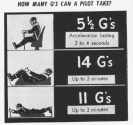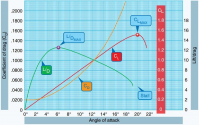View attachment 78603I have been curious about this.
Both the J20’s entire tails can rotate to almost 90 degrees, it’s massive canards can do the same. Doesn’t this alone make it the most maneuverable aircraft out there?
I mean, it’s just so much, it makes me wonder if it can go way above 9G, without a pilot ofc.
You are using an out of date browser. It may not display this or other websites correctly.
You should upgrade or use an alternative browser.
You should upgrade or use an alternative browser.
Aerodynamics thread
- Thread starter siegecrossbow
- Start date
Can’t open that link.
The 9G limit comes from the structure of the aircraft. Technologies for enabling humans to pull much more have been around for decades. For example, systems that allow people to pull and sustain 24Gs without greyout are already tried.I have been curious about this.
Both the J20’s entire tails can rotate to almost 90 degrees, it’s massive canards can do the same. Doesn’t this alone make it the most maneuverable aircraft out there?
I mean, it’s just so much, it makes me wonder if it can go way above 9G, without a pilot ofc.
Then there are possible positioning tweaks:

This is without any G suits.
Aircraft aren't very resilient either. For example, a few seconds above 14G's necessitates a wing replacement for an F-15.
The size of the control surfaces is mostly about yaw, pitch and roll rates. Increasing these increases the angular acceleration and tangential jerk (it would be faster to initiate a 9G turn for example). This is particularly important in situations where generating lift is hard such as high altitude, low speed and the worst, low speed high altitude. In normal situations, having larger control surfaces may increase the lift-to-drag ratio a bit during turns, increasing sustained turn rate a little bit. The reason for this is lift increases with the angle of attack linearly but drag increases exponentially. Everything same, a 2 times larger control surface will need half the deflection which would allow it to produce the same lift with a much smaller drag. For example, this is for symmetrical airfoils. By the way, this is why wing loading is incredibly important for sustained turn rate.

But these effects do not make the control surfaces very important. The lift generated by the main wing is what accelerates the aircraft sideways, and the thrust is what continues fighting the increased drag. An aircraft's capability to generate excess thrust and lift is what determines its maneuverability. The J-20 has a very good thrust-to-weight ratio and a large wing area. It also uses the delta wing and canards combination which increases the max AoA. All of these mean the J-20 should be able to generate a lot of lift with relatively low increase in drag and its engines should be able to deal with it.
